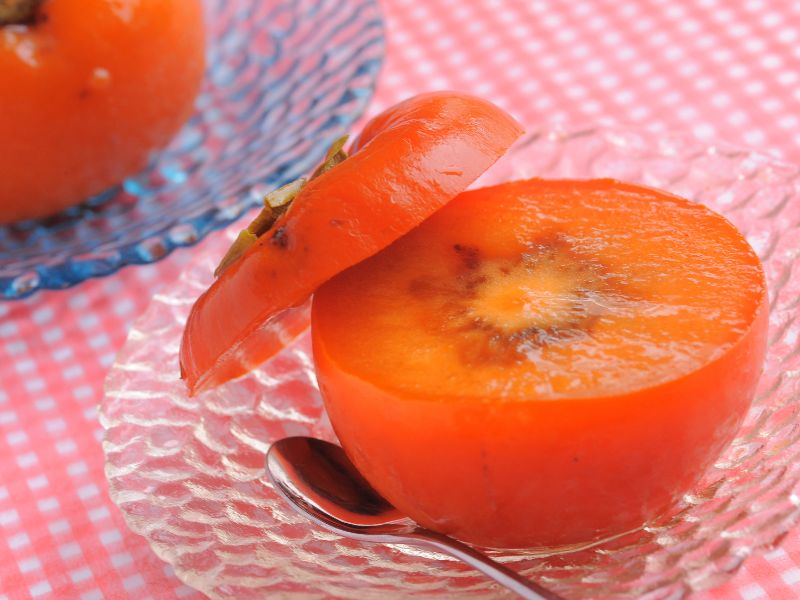Persimmons! These vibrant, orange-colored fruits have been the star ingredient in countless baking recipes. But beyond their delightful taste and notable appearance, there’s a question that’s been on the minds of many: Are persimmon peels edible? The short answer? Yes, they are! But there’s more to the story, as with all things baking and cooking.
Understanding Persimmons
The most common types of persimmons are the Fuyu and Hachiya.
Fuyu Persimmons

Fuyu persimmons are easily recognizable with their squat, round shape, bearing a resemblance to tomatoes. Their bright orange hue and smooth, glossy skin make them a visual delight. When it comes to taste and texture, Fuyus offers a sweet and mildly tangy flavor, reminiscent of a crisp apple when they’re firm. As they mature, they soften, yet their sweetness remains consistent. These characteristics make them versatile in the cooking world. They’re a raw treat when perfectly ripe but still firm, often sliced into salads or used as a dessert topping. Fuyus can sit at room temperature until they ripen and then can be refrigerated for one to three days.
Hachiya Persimmons
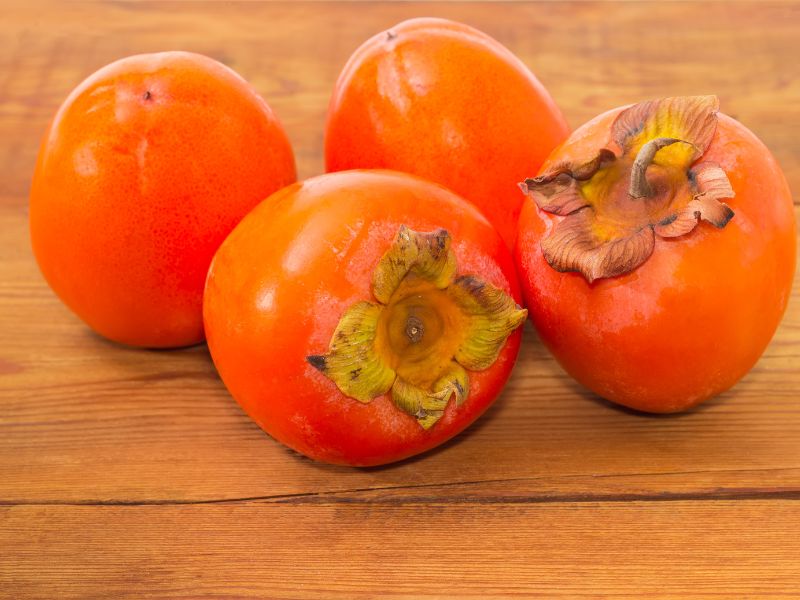
Hachiya persimmons are elongated, acorn-shaped, and generally larger than Fuyu. When ripe, their deep orange-to-reddish hue is a sight to behold. However, one must have patience with Hachiyas. They’re super tart and pretty much impossible to eat when they’re hard.
They become rich, sweet, and custard-like only when they’re fully ripe, almost mushy. This creamy consistency makes them preferred for puddings, smoothies, and baked goods like bread and muffins. They can also be dried, offering a sweet snack for those on the go. In terms of storage, Hachiyas are a waiting game. They should be kept at room temperature until they’re soft to the touch, signaling their full ripeness. They can be refrigerated for up to three days
| 🍅 Nutritional Wonders of Persimmons 🍅 | ||
|---|---|---|
| Nutrient | Amount | Benefits |
| Vitamin A | 55% DV | Promotes good vision |
| Vitamin C | 21% DV | Supports immune function |
| Dietary Fiber | 6g | Aids in digestion |
| Brought to You by wearebaking.com 🍞 | ||
Persimmons are more than just a sweet treat; they’re a powerhouse of nutrition. Rich in essential vitamins and minerals, they offer a host of health benefits. Particularly high in vitamins A, C, and E, persimmons promote good vision, support immune function, and provide antioxidant protection against cellular damage. The fruit is also a great source of dietary fiber, which aids in digestion and supports heart health.
Beyond these vitamins, persimmons contain beneficial plant compounds like tannins, which have anti-inflammatory properties, and flavonoids, known for their antioxidant effects. The presence of minerals like potassium and manganese further enhances their nutritional profile. Potassium helps regulate blood pressure, while manganese plays a role in bone health and metabolism. With every bite of this fruit, you’re indulging in its sweet flavor and nourishing your body.
The Great Peel Debate
The question of whether to eat the peel of fruits is as old as time. With persimmons, this debate takes on a unique flavor. While many are used to peeling fruits like bananas and oranges, persimmons are a different case.
Texture and Taste of the Peel
The peel of the persimmon, especially when compared to other fruits, is relatively thin and smooth. It doesn’t have the tough or bitter quality found in some other fruit skins. The peel has a slightly more robust taste than the inner fruit, offering a hint of earthiness that can complement the sweet flesh. Some even describe it as having a subtle floral undertone, which can add depth to certain dishes.
Nutritional Content of the Peel
From a nutritional standpoint, the peel is a treasure trove. It’s rich in dietary fiber, which aids in digestion and promotes a feeling of fullness. Additionally, research suggests that many of the antioxidants found in persimmons are concentrated in the peel. These antioxidants combat free radicals in the body, supporting overall health. The peel also contains phytochemicals, compounds that have been linked to various health benefits, including anti-inflammatory and anti-cancer properties.
Culinary Uses of the Peel
In the cooking world, the peel can be a secret weapon. Finely diced can add a wonderful texture to jams, chutneys, and baked goods. For those who enjoy experimenting, the peel can be candied or even dried to create a unique snack. Its flexibility allows it to be used in both sweet and savory dishes, from persimmon salsa to persimmon-peel tea.
Considerations and Preferences
You can eat the peel, and it’s good for you. But some people might not like how it feels or tastes in some foods. Think about what you want your dish to be like. For example, adding the peel might change its smoothness if you’re making a smoothie.
Practical Baking Tips with Persimmon Peels

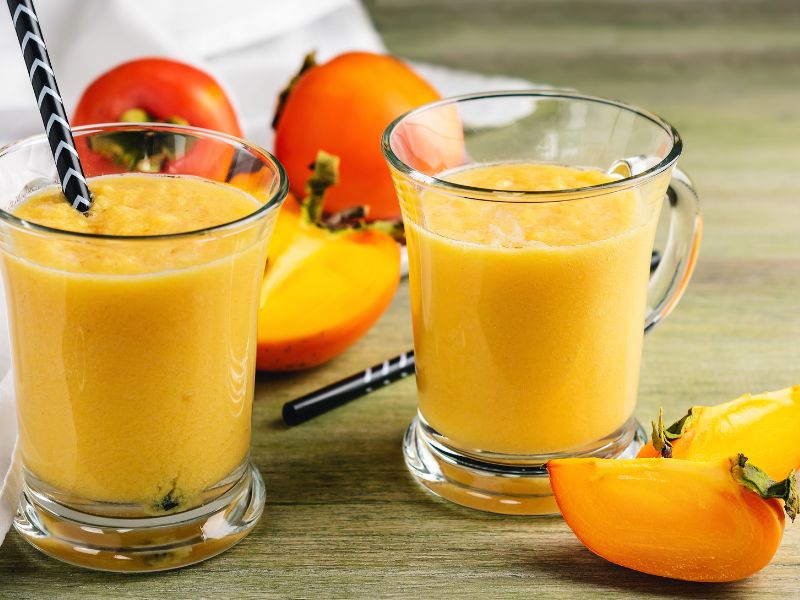
Baking with persimmons is a delightful experience, and the peel can add an unexpected twist to many recipes. But how do you incorporate this often-overlooked part of the fruit into your baking endeavors? Let’s explore some practical tips and tricks.
Adding Persimmon Peels To Recipes
Adding the peel to your recipes can add a wonderful twist to your baked goods. One way to do this is by finely dicing the peel and sprinkling it into muffins, bread, or cookies. These small bits add a surprising crunch and a burst of flavor, elevating the overall taste and texture.
If you’re looking for a more subtle touch, consider using a fine grater to zest the outer layer of the persimmon peel. This zest, rich with the essence of persimmon, can be a flavorful addition to cakes, tarts, or even frostings, elevating the aroma and taste of your desserts.
For those with a sweet tooth, persimmon peels can be transformed into a delightful treat by candying them. By simmering the peels in a sugar syrup until they become translucent and then letting them dry, you create candied peels that can serve as a garnish or be chopped and added to various recipes, offering a sweet and chewy element
When to Avoid Using The Peel
.However, there are times when it might be best to avoid using the peel. The peel could disrupt the desired consistency in desserts that pride themselves on a silky texture, such as mousses or panna cotta.
Additionally, in recipes with a medley of strong flavors, introducing persimmon peel might overcomplicate the taste profile, overshadowing the fruit’s unique flavor. It’s all about striking the right balance.
When it comes to storage and preparation, freezing is an option if you’re not planning to use the peels immediately. Keeping them in an airtight container ensures they remain fresh for several months. When you’re set to use them, just thaw and use them as needed.
For those recipes with a softer, more pliable peel, a brief blanching in boiling water can do the trick, reducing any tartness and making them perfect for a range of dishes.
Safety and Precautions
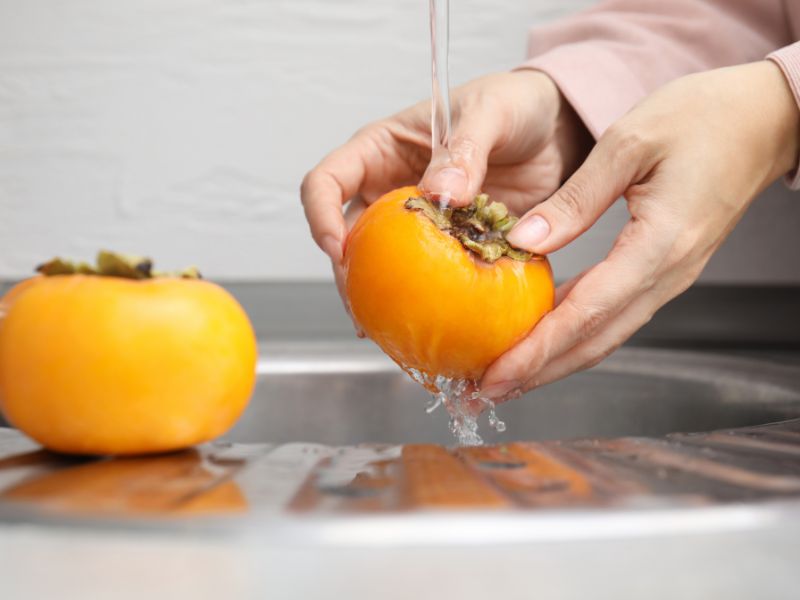
While persimmons are great in many recipes, it’s good to be careful when eating them, especially the peel.
Cleaning persimmons well is important when preparing them to eat, especially the peel. Since they’ve been outside, make sure to wash off any dirt or chemicals. Using a soft brush can help clean them without hurting the fruit. If you really want to eat the peel, maybe go for organic ones since they have fewer chemicals. Also, check the persimmon for any bad spots and cut them off before cooking or eating.
Persimmons are usually safe to eat, but some people might be allergic. If you’ve never had one or know you’re allergic to some fruits, try just a little bit first. Watch out for any itching or swelling. If something feels off, stop eating and maybe see a doctor. The Hachiya type can be super tart if it’s not ripe because of something called tannins. So, wait until it’s really soft before eating. If you want to ripen them faster, put them near apples or bananas. When they’re ripe, keep them in the fridge so they stay fresh. But don’t make them too cold, or they might not taste as good.
Persimmon Pulp
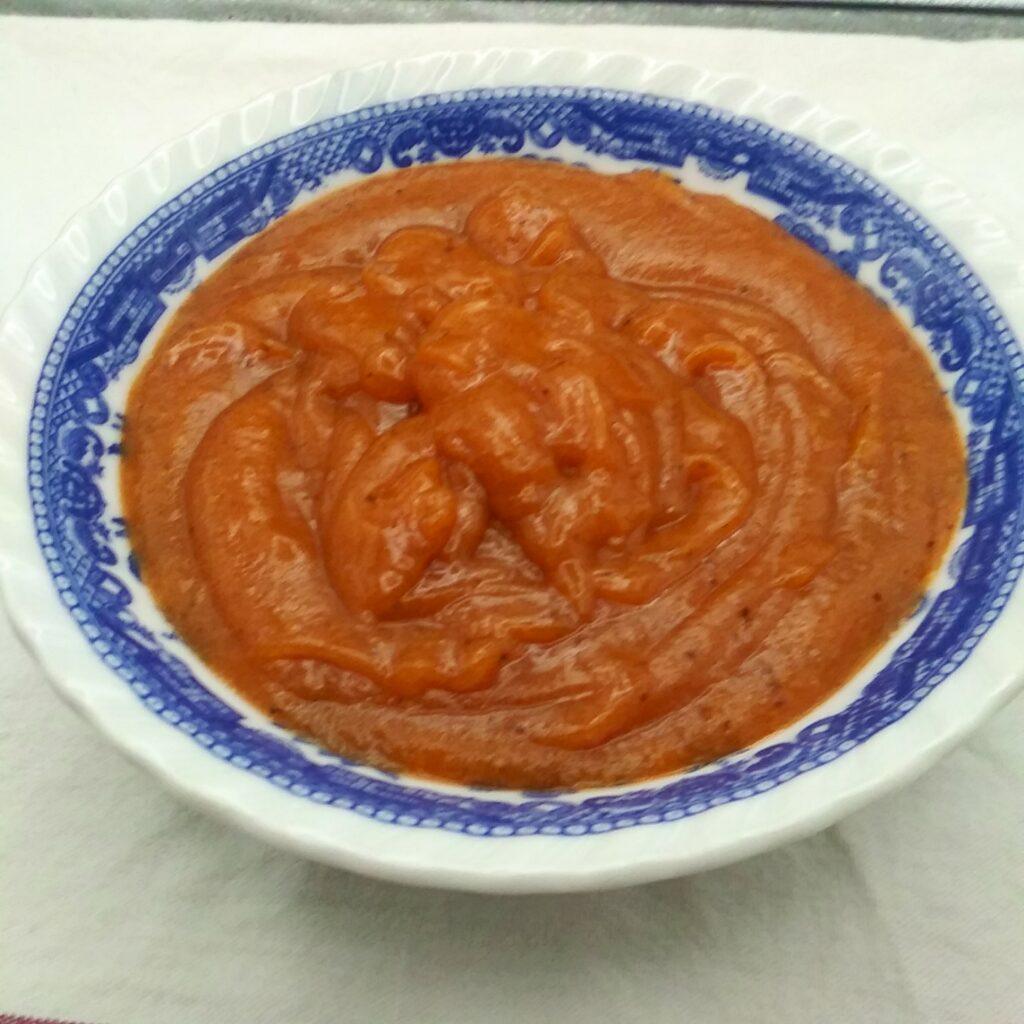
Where I live, there are many who sell persimmon pulp. This makes it so much easier for the ones who want to freeze the pulp for later use, minus all the work. To be honest, I buy the pulp and then freeze it for later to make persimmon pudding for Thanksgiving.
The usual amount is 2 cups in each bag. Most recipes for persimmon pudding are about 1 1/2 to 2 cups. The recipe I use is 1 cup of persimmon pulp. I then have enough left over to make cookies.
I had never heard of persimmons or persimmon pudding until I married, and my mother-in-law introduced me to this delicious fruit and pudding. A bit of a warning. Persimmon pudding is so rich you will only need a small piece. So a 9×9 pan of this stuff will go a long way.
Making pulp for baking isn’t all that hard. Here is how to do it.
And speaking of pudding, here’s a wonderful Persimmon Pudding recipe for you to try
Persimmon Pudding Recipe
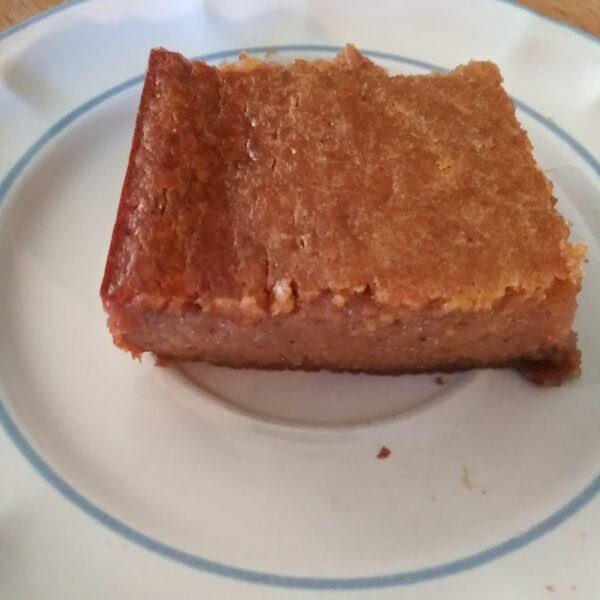
2 eggs
1 cup persimmon pulp
1 Tablespoon melted butter
1 teaspoon cinnamon
1/2 cup nuts. I love pecans, but walnuts work well also
1 cup sugar
1 cup milk
1 teaspoon baking powder.
pinch of salt
1 1/2 cup flour
Mix to a thin batter until smooth and bake in a greased 9×9 pan for 1 hour in a pre-heated 350-degree oven.
I am actually thinking about planting a persimmon tree
Final Thoughts
With their vibrant color and sweet flavor, Persimmons have been a favorite in baked goods or just eating them as they are. Their flexibility in both raw and baked forms makes them a baking and cooking gem. The debate on whether the peels are edible has been put to rest: They are edible and offer a wealth of nutrition and a unique flavor. From understanding the different types of persimmons to exploring the many ways the peel can enhance our baking goods, it’s evident that this fruit has much to offer.
Safety and preparation are very important, and with the right precautions, persimmons can be enjoyed in their entirety. Whether you’re a seasoned baker or someone just discovering the joys of persimmons, embracing the fruit and its peel can open up a world of delicious possibilities. As with all baking and cooking adventures, experimentation is key. So, the next time you have a persimmon in hand, remember its potential and let your creativity run wild.
Have you baked with persimmon peels before? Share your experiences and recipes in the comments below.
And As Always
Keep On Baking!
Taianne
Share The Love

I’m Taianne, the owner and operator behind We Are Baking. Baking my first cake at age 11 hooked me on creating sweet treats. Though my interest faded during childhood, it was rekindled when I married my apple pie-loving husband. I love trying new recipes, tweaking classics, and helping others learn the science and art of baking. I started We Are Baking to share tips, tricks, and favorite recipes I’ve discovered over the years. When not in the kitchen, I enjoy spending time with family and friends. My goal is to inspire others to embrace their creativity through baking. Feel free to contact me with any questions!
Taianne@wearebaking.com

